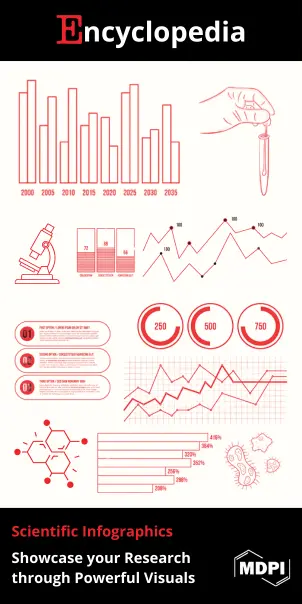
| Version | Summary | Created by | Modification | Content Size | Created at | Operation |
|---|---|---|---|---|---|---|
| 1 | Lily Guo | + 772 word(s) | 772 | 2020-12-15 08:01:16 |
Video Upload Options
mutS homolog 2
1. Introduction
The MSH2 gene provides instructions for making a protein that plays an essential role in repairing DNA. This protein helps fix errors that are made when DNA is copied (DNA replication) in preparation for cell division. The MSH2 protein joins with one of two other proteins, MSH6 or MSH3 (each produced from a different gene), to form a two-protein complex called a dimer. This complex identifies locations on the DNA where errors have been made during DNA replication. Another group of proteins, the MLH1-PMS2 dimer, then binds to the MSH2 dimer and repairs the errors by removing the mismatched DNA and replicating a new segment. The MSH2 gene is one of a set of genes known as the mismatch repair (MMR) genes.
2. Health Conditions Related to Genetic Changes
2.1. Constitutional mismatch repair deficiency syndrome
About 10 mutations in the MSH2 gene have been associated with a condition called constitutional mismatch repair deficiency (CMMRD) syndrome. Individuals with this condition are at increased risk of developing cancers of the colon (large intestine) and rectum (collectively referred to as colorectal cancer), brain, and blood (leukemia or lymphoma). These cancers usually first occur in childhood, with the vast majority of cancers in CMMRD syndrome diagnosed in people under the age of 18. Many people with CMMRD syndrome also develop changes in skin coloring (pigmentation), similar to those that occur in a condition called neurofibromatosis type 1.
Individuals with CMMRD syndrome inherit two MSH2 gene mutations, one from each parent, while people with Lynch syndrome (described below) have a mutation in one copy of the MSH2 gene.
MSH2 gene mutations result in near or complete loss of MSH2 protein production. A shortage of this protein eliminates mismatch repair activity and prevents the proper repair of DNA replication errors. These errors accumulate as the abnormal cells continue to divide. The errors disrupt other genes involved in important cellular processes, such as controlling cell growth and division (proliferation). If cell growth is uncontrolled, it can lead to childhood cancer in people with CMMRD syndrome.
It is thought that the features of neurofibromatosis type 1 in people with CMMRD syndrome are due to genetic changes in the NF1 gene that result from loss of mismatch repair. These changes are present only in certain cells (somatic mutations), whereas NF1 gene mutations that are present in all cells of the body cause neurofibromatosis type 1.
2.2. Lynch syndrome
About 20 percent of all cases of Lynch syndrome with an identified gene mutation are associated with inherited mutations in the MSH2 gene. Lynch syndrome increases the risk of many types of cancer, particularly colorectal cancer. People with Lynch syndrome also have an increased risk of cancers of the endometrium (lining of the uterus), ovaries, stomach, small intestine, gallbladder ducts, upper urinary tract, and brain. By age 75, the risk of developing one of these cancers is 80 percent for women and 75 percent for men with an MSH2 gene mutation.
MSH2 gene mutations involved in Lynch syndrome may cause the production of an abnormally short or inactive MSH2 protein or prevent the production of any protein from one copy of the gene. An altered protein cannot perform its normal function. A decrease in functional MSH2 protein leads to an increase in unrepaired DNA errors during cell division. The errors accumulate as the cells continue to divide, increasing the risk of tumor formation in the colon or another part of the body.
Because there is some functional MSH2 protein produced from the normal copy of the gene, mismatch repair activity in Lynch syndrome is reduced but not absent, as it is in CMMRD syndrome (described above). This difference in DNA repair activity levels likely explains why cancers in Lynch syndrome generally develop in adulthood while those in CMMRD syndrome often affect children.
Some mutations in the MSH2 gene cause a variant of Lynch syndrome called Muir-Torre syndrome. In addition to colorectal cancer, people with this condition have an increased risk of developing several uncommon skin tumors. These rare skin tumors include sebaceous adenomas and carcinomas, which occur in glands that produce an oily substance called sebum (sebaceous glands). Multiple rapidly growing tumors called keratoacanthomas may also occur, usually on sun-exposed areas of skin.
2.3. Ovarian cancer
Inherited changes in the MSH2 gene increase the risk of developing ovarian cancer, as well as other types of cancer, as part of Lynch syndrome (described above). Women with Lynch syndrome have an 8 to 10 percent chance of developing ovarian cancer, as compared with 1.6 percent in the general population.
3. Other Names for This Gene
-
MSH2_HUMAN
-
mutS (E. coli) homolog 2
-
mutS (E. coli) homolog 2 (colon cancer, nonpolyposis type 1)
-
mutS homolog 2, colon cancer, nonpolyposis type 1 (E. coli)
References
- Arshita N, Lestari RV, Hutajulu SH, Ghozali A, Paramita DK. The Tendency ofHaving MSH2 and MSH6 Microsatellite Instability among ClinicopathologicalFeatures in Patients with Colorectal Cancer. Asian Pac J Cancer Prev. 2018 Nov29;19(11):3147-3152.
- Bandipalliam P. Syndrome of early onset colon cancers, hematologicmalignancies & features of neurofibromatosis in HNPCC families with homozygousmismatch repair gene mutations. Fam Cancer. 2005;4(4):323-33. Review.
- Dominguez-Valentin M, Sampson JR, Seppälä TT, Ten Broeke SW, Plazzer JP,Nakken S, Engel C, Aretz S, Jenkins MA, Sunde L, Bernstein I, Capella G, BalaguerF, Thomas H, Evans DG, Burn J, Greenblatt M, Hovig E, de Vos Tot Nederveen CappelWH, Sijmons RH, Bertario L, Tibiletti MG, Cavestro GM, Lindblom A, Della Valle A,Lopez-Köstner F, Gluck N, Katz LH, Heinimann K, Vaccaro CA, Büttner R, Görgens H,Holinski-Feder E, Morak M, Holzapfel S, Hüneburg R, Knebel Doeberitz MV, LoefflerM, Rahner N, Schackert HK, Steinke-Lange V, Schmiegel W, Vangala D, PylvänäinenK, Renkonen-Sinisalo L, Hopper JL, Win AK, Haile RW, Lindor NM, Gallinger S, LeMarchand L, Newcomb PA, Figueiredo JC, Thibodeau SN, Wadt K, Therkildsen C,Okkels H, Ketabi Z, Moreira L, Sánchez A, Serra-Burriel M, Pineda M, Navarro M,Blanco I, Green K, Lalloo F, Crosbie EJ, Hill J, Denton OG, Frayling IM, Rødland EA, Vasen H, Mints M, Neffa F, Esperon P, Alvarez K, Kariv R, Rosner G, PineroTA, Gonzalez ML, Kalfayan P, Tjandra D, Winship IM, Macrae F, Möslein G, Mecklin JP, Nielsen M, Møller P. Cancer risks by gene, age, and gender in 6350 carriersof pathogenic mismatch repair variants: findings from the Prospective LynchSyndrome Database. Genet Med. 2020 Jan;22(1):15-25. doi:10.1038/s41436-019-0596-9.Sep;22(9):1569.
- Guillem JG, Moore HG, Palmer C, Glogowski E, Finch R, Nafa K, Markowitz AJ,Offit K, Ellis NA. A636P testing in Ashkenazi Jews. Fam Cancer.2004;3(3-4):223-7. Review.
- Kohlmann W, Gruber SB. Lynch Syndrome. 2004 Feb 5 [updated 2018 Apr 12]. In:Adam MP, Ardinger HH, Pagon RA, Wallace SE, Bean LJH, Stephens K, Amemiya A,editors. GeneReviews® [Internet]. Seattle (WA): University of Washington,Seattle; 1993-2020. Available from http://www.ncbi.nlm.nih.gov/books/NBK1211/
- Lynch HT, de la Chapelle A. Hereditary colorectal cancer. N Engl J Med. 2003Mar 6;348(10):919-32. Review.
- Lützen A, de Wind N, Georgijevic D, Nielsen FC, Rasmussen LJ. Functionalanalysis of HNPCC-related missense mutations in MSH2. Mutat Res. 2008 Oct14;645(1-2):44-55. doi: 10.1016/j.mrfmmm.2008.08.015.
- Mitchell RJ, Farrington SM, Dunlop MG, Campbell H. Mismatch repair genes hMLH1and hMSH2 and colorectal cancer: a HuGE review. Am J Epidemiol. 2002 Nov15;156(10):885-902. Review.
- Moufid FZ, Bouguenouch L, El Bouchikhi I, Chbani L, Iraqui Houssaini M, Sekal M, Belhassan K, Bennani B, Ouldim K. The First Molecular Screening of MLH1 andMSH2 Genes in Moroccan Colorectal Cancer Patients Shows a Relatively HighMutational Prevalence. Genet Test Mol Biomarkers. 2018 Aug;22(8):492-497. doi:10.1089/gtmb.2018.0067.
- Pande M, Wei C, Chen J, Amos CI, Lynch PM, Lu KH, Lucio LA, Boyd-Rogers SG,Bannon SA, Mork ME, Frazier ML. Cancer spectrum in DNA mismatch repair genemutation carriers: results from a hospital based Lynch syndrome registry. FamCancer. 2012 Sep;11(3):441-7. doi: 10.1007/s10689-012-9534-6.
- Pennington KP, Swisher EM. Hereditary ovarian cancer: beyond the usualsuspects. Gynecol Oncol. 2012 Feb;124(2):347-53. doi:10.1016/j.ygyno.2011.12.415. Review.
- Rishi K, Font RL. Sebaceous gland tumors of the eyelids and conjunctiva in theMuir-Torre syndrome: a clinicopathologic study of five cases and literaturereview. Ophthalmic Plast Reconstr Surg. 2004 Jan;20(1):31-6. Review. Erratum in: Ophthal Plast Reconstr Surg. 2004 May;11(5):953.
- Schneider NB, Pastor T, Paula AE, Achatz MI, Santos ÂRD, Vianna FSL, Rosset C,Pinheiro M, Ashton-Prolla P, Moreira MÂM, Palmero EI; Brazilian Lynch SyndromeStudy Group. Germline MLH1, MSH2 and MSH6 variants in Brazilian patients withcolorectal cancer and clinical features suggestive of Lynch Syndrome. Cancer Med.2018 May;7(5):2078-2088. doi: 10.1002/cam4.1316.
- South CD, Hampel H, Comeras I, Westman JA, Frankel WL, de la Chapelle A. Thefrequency of Muir-Torre syndrome among Lynch syndrome families. J Natl CancerInst. 2008 Feb 20;100(4):277-81. doi: 10.1093/jnci/djm291.
- Tamura K, Kaneda M, Futagawa M, Takeshita M, Kim S, Nakama M, Kawashita N,Tatsumi-Miyajima J. Correction to: Genetic and genomic basis of the mismatchrepair system involved in Lynch syndrome. Int J Clin Oncol. 2019 Sep;24(9):1012. doi: 10.1007/s10147-019-01515-w.




